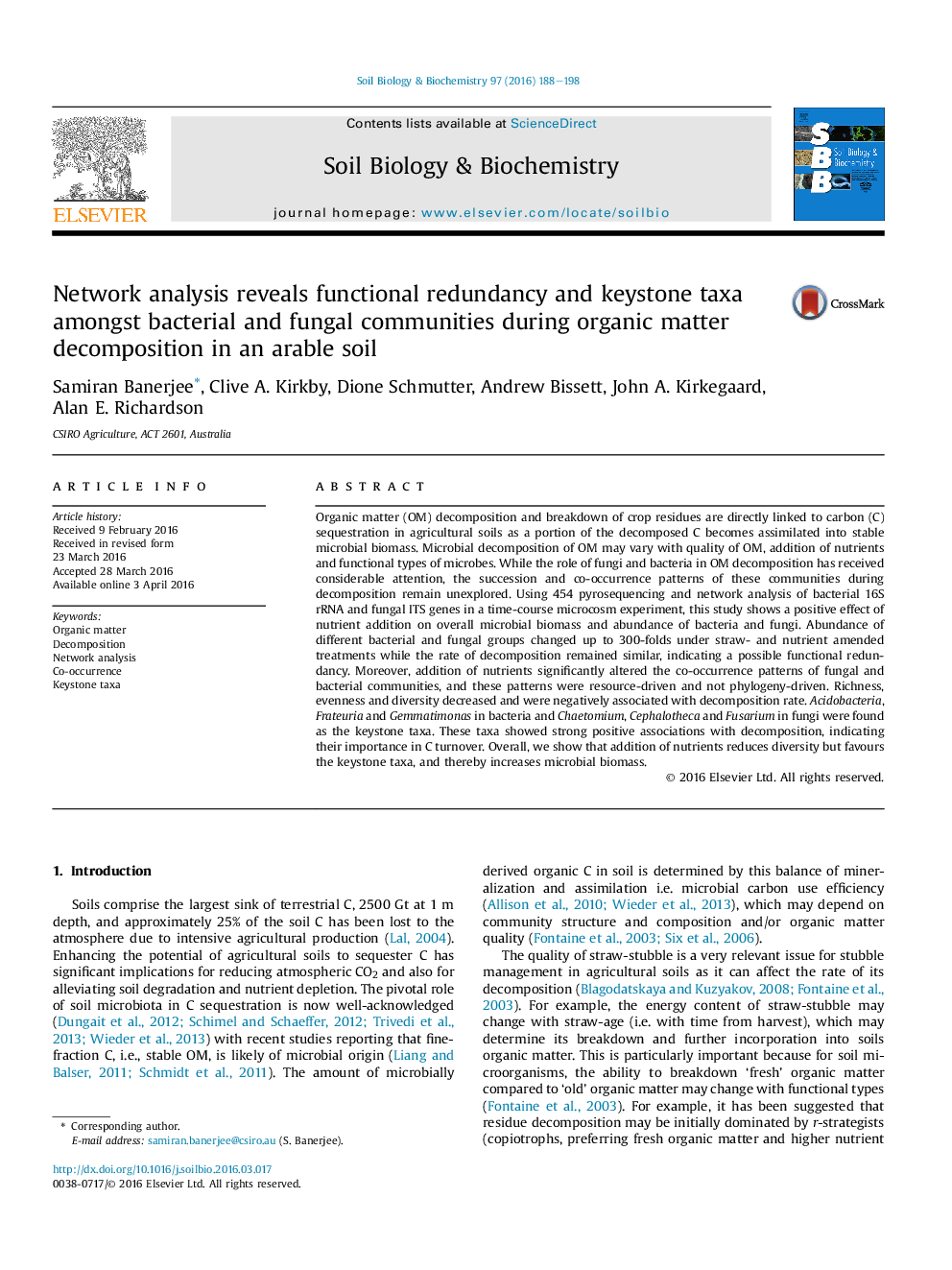| Article ID | Journal | Published Year | Pages | File Type |
|---|---|---|---|---|
| 2024333 | Soil Biology and Biochemistry | 2016 | 11 Pages |
Abstract
Organic matter (OM) decomposition and breakdown of crop residues are directly linked to carbon (C) sequestration in agricultural soils as a portion of the decomposed C becomes assimilated into stable microbial biomass. Microbial decomposition of OM may vary with quality of OM, addition of nutrients and functional types of microbes. While the role of fungi and bacteria in OM decomposition has received considerable attention, the succession and co-occurrence patterns of these communities during decomposition remain unexplored. Using 454 pyrosequencing and network analysis of bacterial 16S rRNA and fungal ITS genes in a time-course microcosm experiment, this study shows a positive effect of nutrient addition on overall microbial biomass and abundance of bacteria and fungi. Abundance of different bacterial and fungal groups changed up to 300-folds under straw- and nutrient amended treatments while the rate of decomposition remained similar, indicating a possible functional redundancy. Moreover, addition of nutrients significantly altered the co-occurrence patterns of fungal and bacterial communities, and these patterns were resource-driven and not phylogeny-driven. Richness, evenness and diversity decreased and were negatively associated with decomposition rate. Acidobacteria, Frateuria and Gemmatimonas in bacteria and Chaetomium, Cephalotheca and Fusarium in fungi were found as the keystone taxa. These taxa showed strong positive associations with decomposition, indicating their importance in C turnover. Overall, we show that addition of nutrients reduces diversity but favours the keystone taxa, and thereby increases microbial biomass.
Related Topics
Life Sciences
Agricultural and Biological Sciences
Soil Science
Authors
Samiran Banerjee, Clive A. Kirkby, Dione Schmutter, Andrew Bissett, John A. Kirkegaard, Alan E. Richardson,
